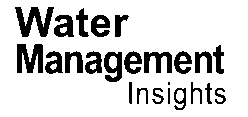In the heart of Iran, a young researcher is stirring up the world of renewable energy and waste management. Amin Pirmoghani, a member of the Student Research Committee at the Research Institute for Health Development, Kurdistan University of Medical Sciences, is exploring how to turn agricultural and animal waste into a goldmine of biogas, a renewable energy source. His recent study, published in the Journal of Advances in Environmental Health Research, delves into the intricacies of anaerobic digestion (AD), a process that converts waste into biogas, offering a beacon of hope for a more sustainable future.
Pirmoghani’s work is not just about energy; it’s about transforming waste into wealth. “The benefits of biogas are manifold,” Pirmoghani explains. “It’s not just about energy generation; it’s about waste reduction, pathogen elimination, and converting organic waste into high-quality fertilizer.” This fertilizer, a by-product of the AD process, can significantly boost farm profitability, creating a virtuous cycle of sustainability and economic growth.
The energy sector is taking notice. Biogas, produced from anaerobic digestion, can enhance energy security, reduce dependence on imports, and mitigate greenhouse gas emissions. It’s a win-win for the environment and the economy. However, the path to widespread adoption is not without challenges. Small-scale technology, impurities, temperature sensitivity, and limited applicability in urban areas are hurdles that need to be overcome.
Pirmoghani’s research offers a roadmap to navigate these challenges. He suggests that conducting the fermentation process in controlled environments using digestion tanks can improve economic feasibility. Moreover, he highlights the potential of technological advancements, such as nanotechnology, to increase biogas production. But the benefits don’t stop at energy. Proper management of livestock waste can reduce environmental impacts, and the pricing of natural resources, including land, water, and landfills, is crucial for sustainability.
The study also sheds light on the public health risks posed by pathogens in animal waste, such as Escherichia coli and Salmonella. Efficient management of these wastes is essential to prevent contamination of water, food, and surfaces, underscoring the interdisciplinary nature of Pirmoghani’s work.
As we stand on the cusp of a renewable energy revolution, Pirmoghani’s research offers a glimpse into the future. It’s a future where waste is not a problem but a resource, where energy is not a commodity but a common good, and where sustainability is not a choice but a necessity. The Journal of Advances in Environmental Health Research, translated to English, is a fitting platform for such groundbreaking work, and Pirmoghani’s study is a testament to the power of research to shape our world.
The implications for the energy sector are profound. As we strive for a more sustainable future, Pirmoghani’s work offers a blueprint for turning waste into wealth, for harnessing the power of nature to fuel our lives, and for creating a world where energy is not a source of conflict but a beacon of hope. The future of energy is here, and it’s biogas.
